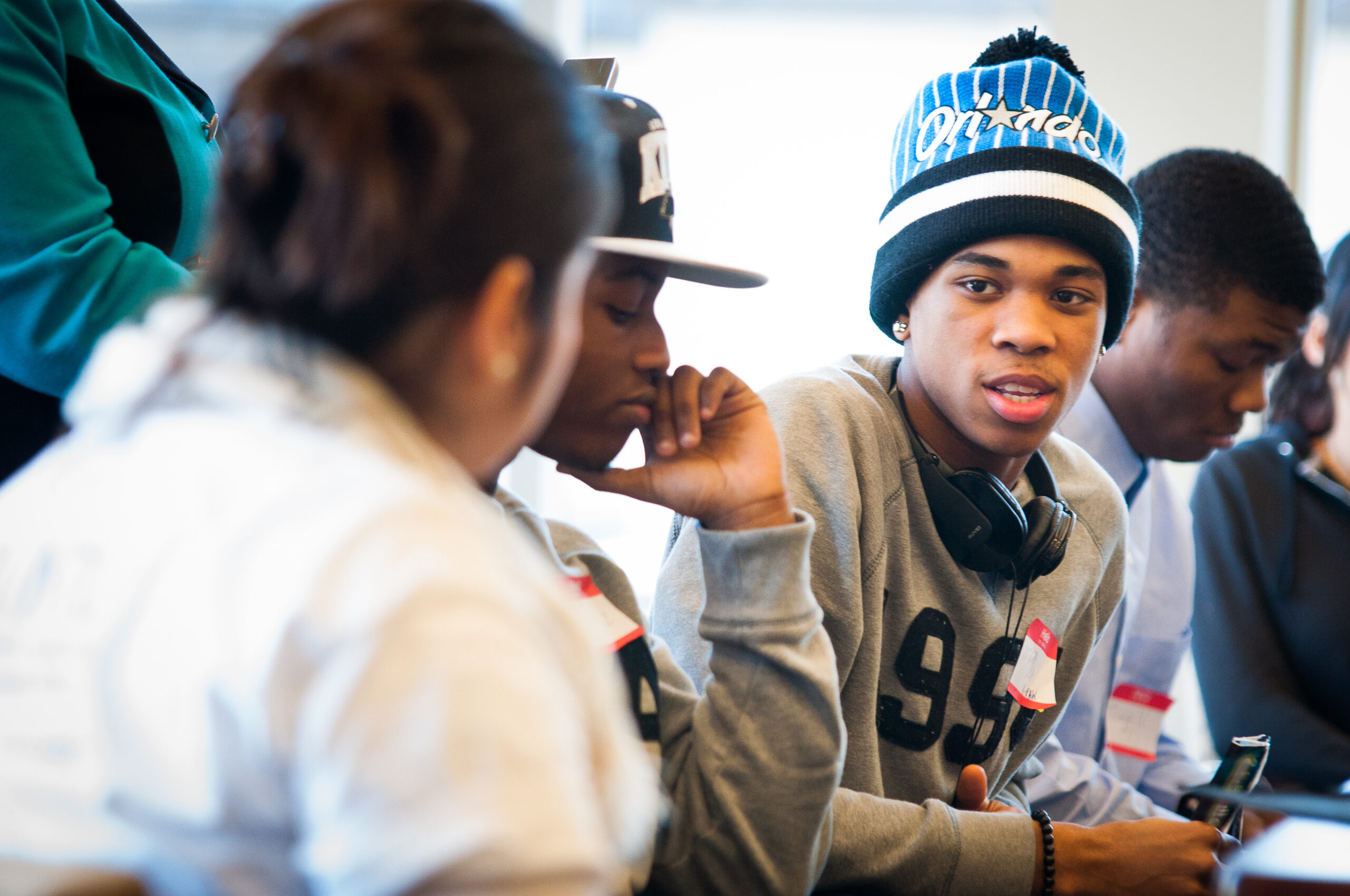Earlier this year, the Foundation’s trustees ratified new strategies for Barr’s Education program, which represent not only a new, sharper focus for our portfolio, but also an expansion of our reach—with new engagement in the Commonwealth and broader New England region.
New Program Goal
Grounded in our core belief that all students can succeed in school and in life, the goal of Barr’s new Education program is to connect all students to success in and beyond high school. To advance this goal, we will align our efforts to the two strategies where we see the greatest opportunity for Barr to be a constructive partner: 1) achieving a new vision of secondary education in New England; and 2) expanding access to K–12 quality in Boston.
A New Vision of Secondary Education
The goal of creating a new vision of secondary education in New England will focus in three areas:
- Broadening the definition of student success to include competencies as well as mastery of academic subjects.
- Supporting the development of new high school models and programs that are flexible and conducive to innovation, and that move away from an outdated, one-size-fits-all approach to secondary education.
- Advancing system conditions that support innovative school and program models.
We recognize that conducting this work requires us to adopt a long-term perspective and will depend upon our ability to form deep partnerships across Boston, the Commonwealth, and New England—just as we will learn from and contribute to similar efforts around the country.
This new focus also reflects a shift that is aligned with strong national momentum in the secondary space, in addition to research that underscores both significant need and opportunity.By joining this growing community and national dialogue, we look to catalyze efforts that support the formal integration of diverse and important work that is happening across critical interaction points with young people. This includes the intersection of in- and out-of-school time, transitions between secondary and post-secondary, and greater connections to workforce and career exploration and preparation.
K–12 Quality in Boston
Our second strategy of expanding access to K–12 quality for all youth in Boston builds upon our strong and longstanding commitment to our home city. Our work here will focus on increasing the number of seats in existing high-quality schools and replicating high-performing public-school models. We will also seek to facilitate partnerships where high-capacity organizations—both local and national—can work with teachers, principals, and administrators to develop and implement high-quality programs in support of Boston schools.
To learn more about our strategies and grantmaking priorities, and how best to introduce ideas to us, I encourage you to visit our pages about our regional strategies and Boston strategies.
A central tenet of our strategic planning was to bring renewed focus to Barr’s Education portfolio in order to yield meaningful impact and results for students in New England. Accordingly, the balance between a New England portfolio focused on secondary and post-secondary success and our Boston-specific strategy to scale K–12 quality is an intentional undertaking designed to reach more students—both regionally and in our home community of Boston—through targeted priorities.
Supporting Responsible Transitions
While the opportunity to bring greater focus to our work is exciting, it also required making choices. We will therefore be winding down a number of legacy investment areas that fall outside of our new strategies, specifically in the Early Childhood and Out-of-School Time portfolios. We are grateful for the partnerships with—and proud of the contributions by—our grantees in these areas. And we are committed to dedicating the time and resources necessary to ensure thoughtful transitions for both the Early Childhood and Out-of-School Time portfolios. We have already been in close communication with grantees affected by this shift in strategies—both to plan for a responsible transition, as well as to identify opportunities to document, share, and celebrate the significant accomplishments from this work.
The Work Begins
As we embark in this exciting new direction, Barr is eager to join and learn from both regional and national colleagues, partners, and practitioners in this work. Our hope is that our new focus will deepen our knowledge and expertise, while helping to inform and inspire participation in the growing groundswell behind innovation in secondary education. Early reactions to our new strategy from the education community have been affirming and encouraging.
While this new vision is far-reaching and ambitious, it needs to be. We want to support all students so that they are empowered to make well-informed decisions and are well prepared to succeed in life.
Thank you for taking the time to learn about Barr’s new Education strategies. We hope you will join the conversation with us on this blog and in other forums as we begin this new phase of work.




